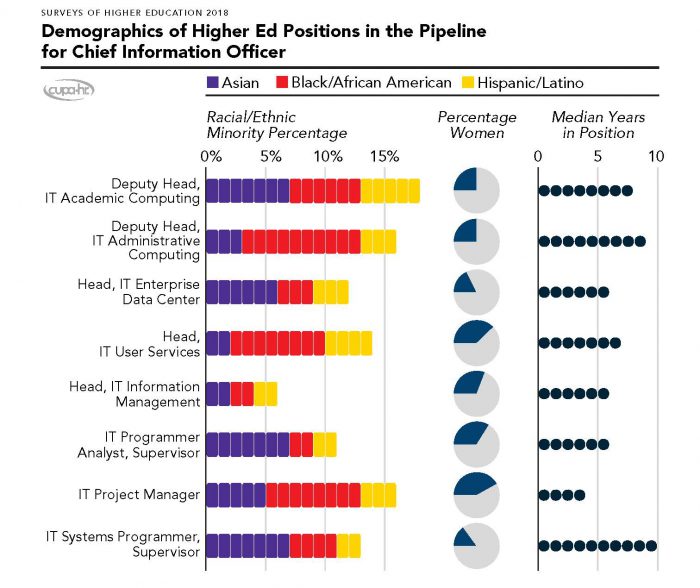The Diversification of the Higher Ed IT Workforce
 While the information technology workforce in higher education is currently mostly White and male, a demographic shift could be on the horizon.
While the information technology workforce in higher education is currently mostly White and male, a demographic shift could be on the horizon.
According to new research from CUPA-HR on the diversity of the higher ed IT workforce, a looming retirement wave in this sector could pave the way for more women and minorities to move into IT leadership roles.
As highlighted in CUPA-HR’s new report Diversity in Higher Education Information Technology: From Today’s Workforce to Tomorrow’s Leaders, IT in higher ed remains an overwhelmingly White (81 percent) and male (74 percent) field, and intersectional diversity is extremely limited — for example, only 3 percent of IT administrators are minority females.
The data also show that 43 percent of IT administrators in colleges and universities are over the age of 55, and 39 percent have been in their current roles for more than a decade. As these older and long-serving IT leaders begin to retire, the DEI needle could begin to move, as data indicate that certain positions in the immediate higher ed IT leadership pipeline have a higher representation of women and minorities.

Says Adam Pritchard, Ph.D., senior survey researcher at CUPA-HR and lead author of the report, “While there are decent numbers of women and/or minorities in the IT pipeline who are qualified to be promoted to leadership, college and university IT leaders must take deliberate action to intentionally identify and promote them.”
Other findings from the report include:
- Minority representation in IT positions is higher in some parts of the country than in others, specifically the South and West.
- Despite lower representation, pay among women and minorities is frequently close or comparable to salaries paid to White men, although large differences occur in certain types of roles.
- With a potentially large number of retirements in higher ed IT leadership coming down the pike, the time to begin succession planning is now.
Read the full report and browse CUPA-HR’s other research reports and briefs.


